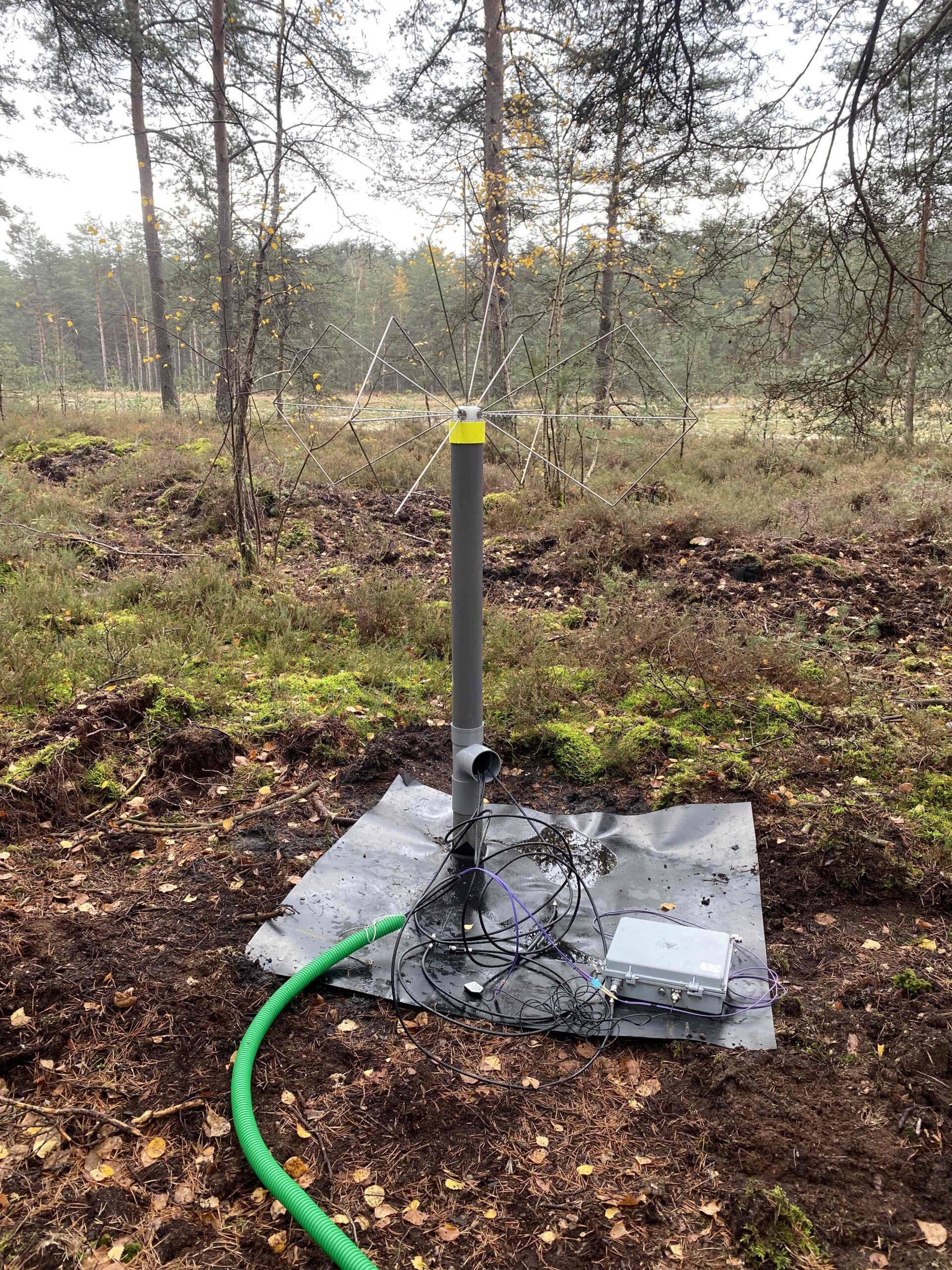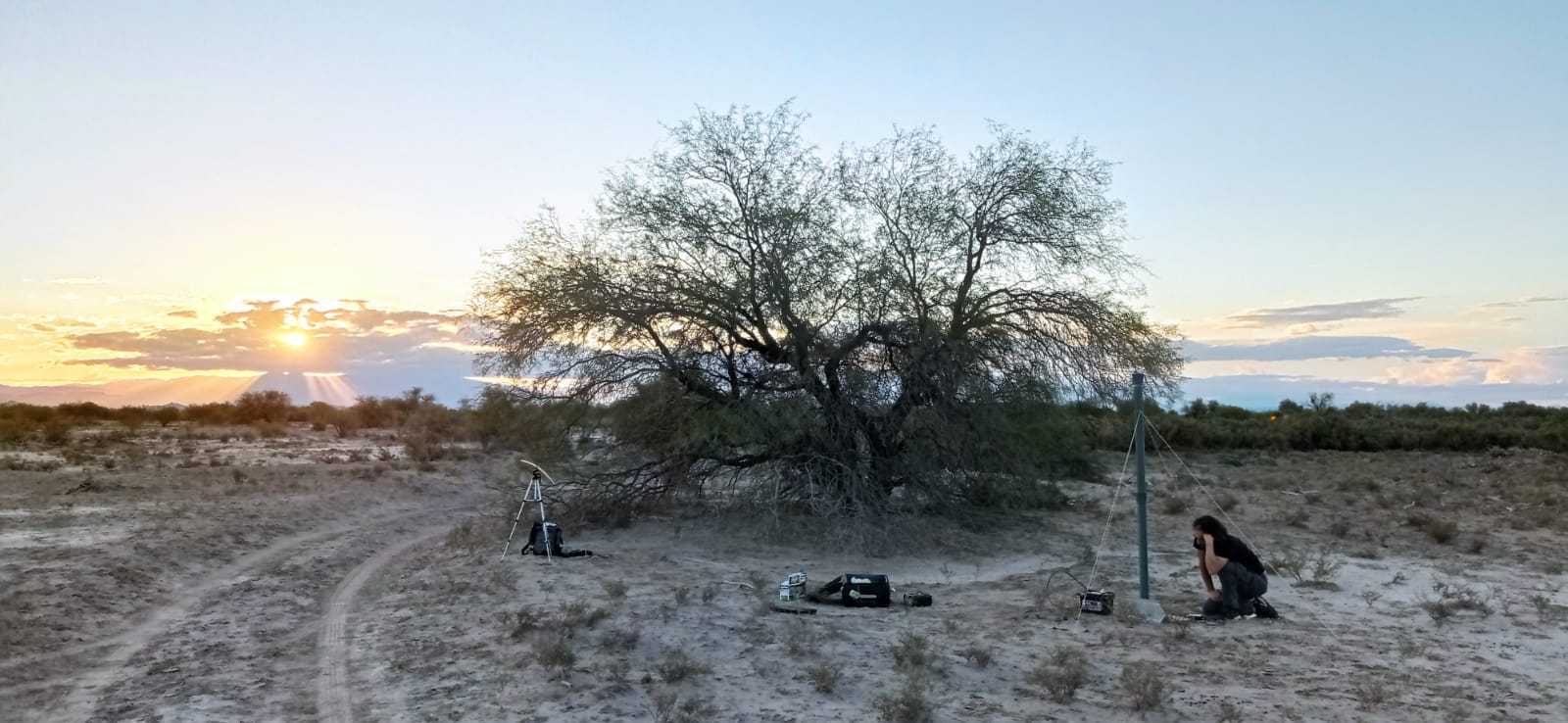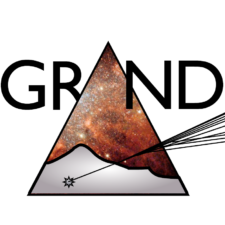Several GRAND prototypes will validate the detection principle, test and optimize the detection units design, the autonomous trigger and data transfer strategies.
TREND (2011-2014)
Tianshan Radio Experiment for Neutrino Detection (TREND) was an antenna array devoted to the autonomous radio-detection of high energy cosmic rays deployed at the Tianshan Mountains in the XinJiang province of China. It includes 50
antennas for a total
area of 1.2 km
2. It is the first experiment that showed that autonomous radio detection of air showers is possible with a high background rejection outside of polar areas (
Ardouin et al. 2011).


GRAND @ Nançay (2022-2024)
One of the major challenges for a giant surface array such as GRAND is the autonomous identification of radio signals from air showers by the antennas, without the usage of any complementary particle detectors. With the start of the NUTRIG project in 2022 (a project in collaboration between Paris – LPNHE and IAP – and KIT, funded jointly by ANR and DFG), and in tight collaboration with the team of Radboud University, we take on this challenge. A dedicated trigger algorithm is being developed for the efficient selection of air-shower radio pulses using GRAND antennas, while maintaining a strong background rejection. To develop these trigger algorithms, a test setup of four GRAND antennas has been deployed at the Nançay Radio Observatory in France, roughly 200 km south of Paris. Located deep within the heart of the French forest, this radio-quiet site provides an excellent environment to test the functionality of the GRAND antennas, and develop the dedicated trigger algorithms.

GRANDProto300 (2023 – )
GRANDproto300 will be deployed in the Gobi desert in the Gansu province, China. 100 antennas have already been produced pre-pandemic and await deployment. A first set of 13 antennas is currently under deployment.
GRANDProto300 will provide experimental validation of our simulations of radio detection of horizontal showers. It will span an area of 100‑300 km 2, consisting of 300 antennas, with a hexagonal grid layout with a 1 km inter-antenna spacing. GRANDProto300 will be the largest self-triggered radio array for air-shower detection targeting cosmic rays in the range 10 17-10 18 eV. Up to 10 5 cosmic-ray events are expected in the first two years of operation. GRANDProto300 will be in a privileged position to study the transition between Galactic and extragalactic cosmic rays. The spectrum and mass composition of cosmic rays obtained with GRANDProto300 will be compared to results from previous experiments in order to confirm that very inclined air showers can be detected and accurately reconstructed using radio, hence validating an important step towards further stages of GRAND.
GRAND10k
It is the fi rst large element of the full GRAND array. GRAND10k will be the fi rst radio array that is sensitive to UHE neutrinos. It will consist of 10,000 antennas deployed over an area selected for its suitability for the detection of neutrino‑initiated air showers — a hotspot. Possible locations include the Gobi desert and Argentina, where promising site measurements campaigns have been run. GRAND10k would yield a integral sensitivity to UHE neutrinos of 7.2 x 10 -9 GeV cm -2 s -1 sr -1 after 3 years. GRAND10k will also be large enough to detect giant radio pulses for radio-astronomy.


